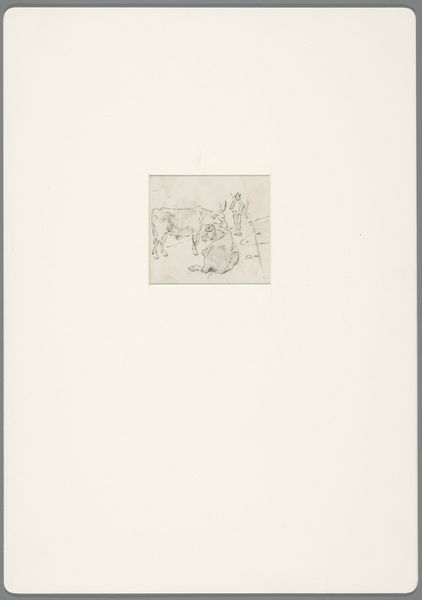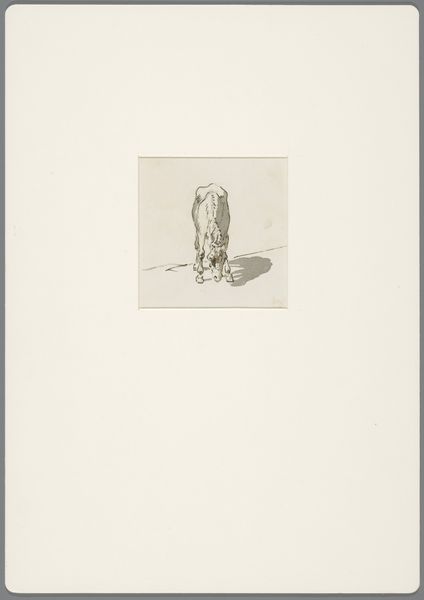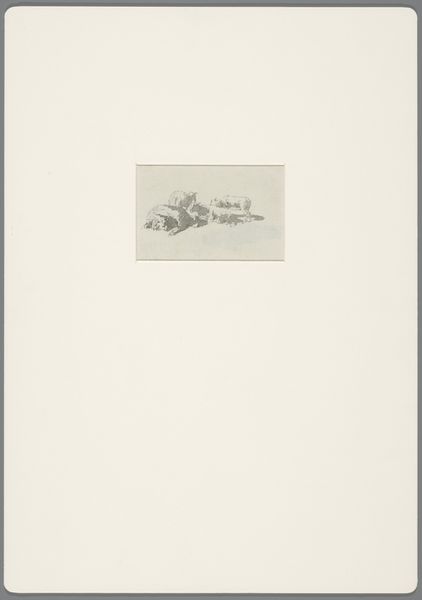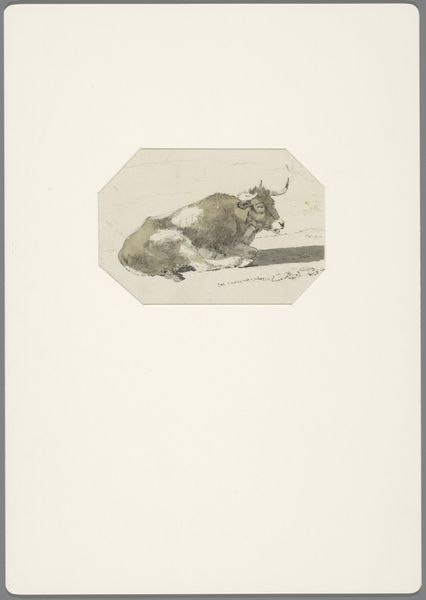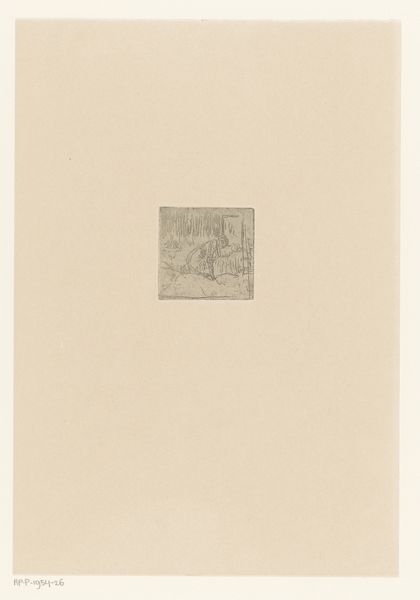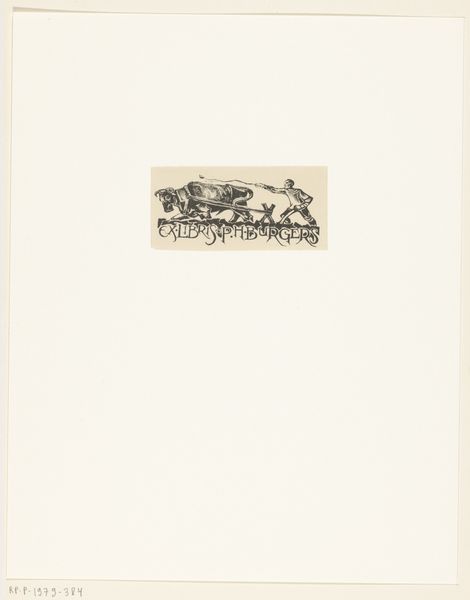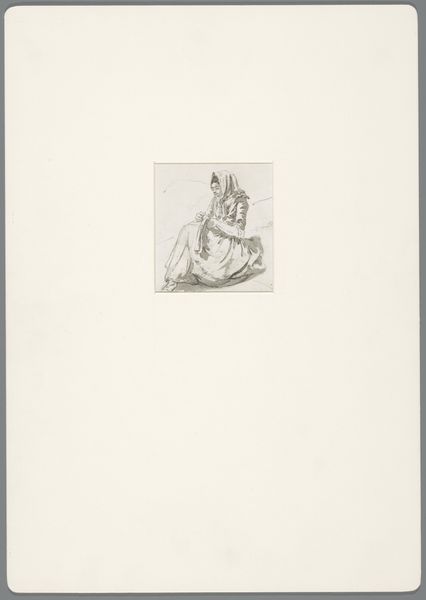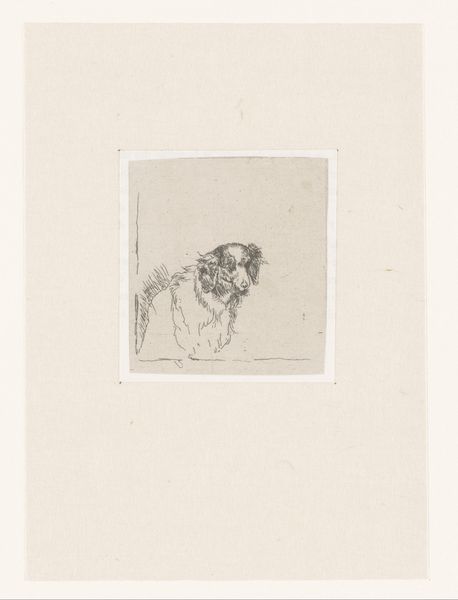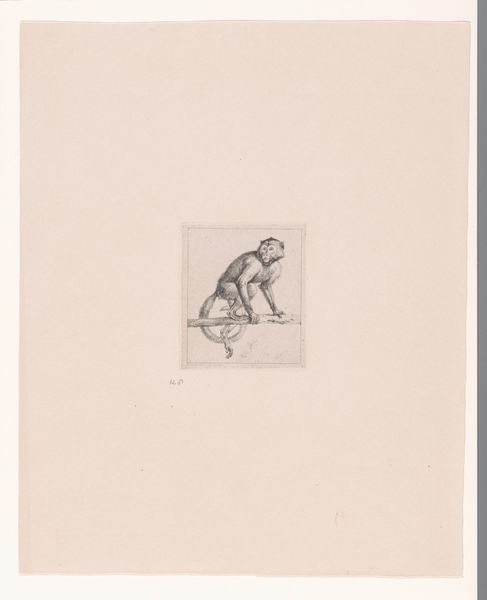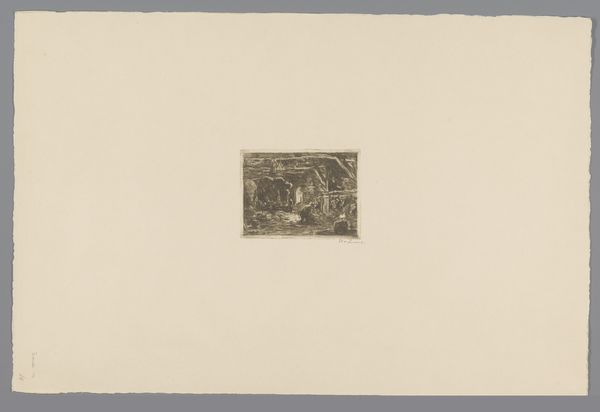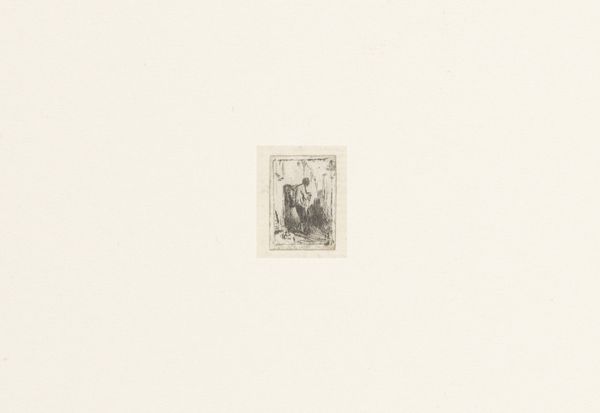
Dimensions: height 72 mm, width 111 mm
Copyright: Rijks Museum: Open Domain
Curator: Let’s explore this evocative drawing entitled "Stier in galop in de aanval," or "Bull at Gallop in Attack." Attributed to David Alphonse de Sandoz-Rollin, this work was created sometime between 1750 and 1809. It’s rendered in ink on paper. Editor: My immediate reaction is of dynamism contained within a very small space. The bull is captured mid-leap; the artist has effectively conveyed an impression of restless power, but it feels restrained, somehow. Curator: Indeed. The artist’s choice of ink and paper suggests that the materials available to the artist influenced the choice of media, perhaps signaling a desire for portability. Ink lends itself well to spontaneous, almost impulsive mark-making; do you observe that same immediacy? Editor: Absolutely. Notice how the cross-hatching builds form and creates a sense of musculature. It's fascinating how line alone can describe volume and suggest weight. Also the very minimalist landscape implies vastness through omission. Curator: It brings up interesting ideas around labor as well. Think about the material gathering and preparation necessary. How does that inform its intended market appeal or viewership during the Romantic era? The romantic view often elevated the subject into something of significance beyond brute force. Editor: Yes. Considering this through a semiotic lens, the bull functions as a symbol of untamed nature and male virility, core to Romantic themes. The loose sketching contributes to a feeling of freedom, as if the bull might at any moment break free from the confines of the page. Curator: The process here is one of extraction - the labor needed to bring ink and paper to their final form represents labor beyond artistic vision that many often don't notice. What would our present lives have looked like, even just regarding artistic consumption, had ink not been easily made? Editor: It certainly allows us to reflect upon how materials and the availability of said resources, inform technique and ultimately expression in art. Curator: Right, it leaves one to contemplate all the hands involved that eventually coalesce into the artist's unique creation. Editor: For me, it distills down to a potent illustration of artistic control. A bounded dynamism brought into being through careful lines and form, making a clear expression even in miniature.
Comments
No comments
Be the first to comment and join the conversation on the ultimate creative platform.
